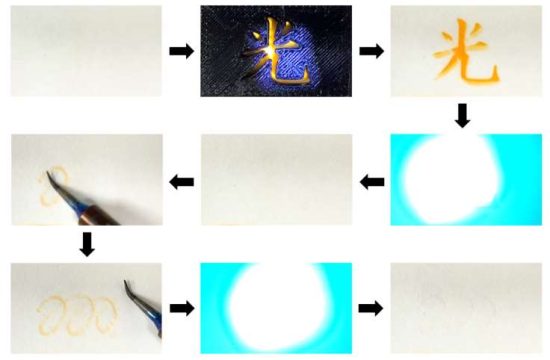Researchers at Nagoya University have developed a composite material that, by adjusting its composition and exposing it to different types of light, can mimic animals’ changes in color.

Nagoya, Japan – A range of creatures, including chameleons, octopuses, and frogs, can change color in response to changes in the environment. Some insights into the mechanisms behind this at the anatomical, cellular, and molecular levels have been obtained. However, much work is still required to obtain sufficient understanding of this phenomenon and to translate it into useful artificial applications.
As reported in the journal Small, researchers at Nagoya University’s Department of Molecular Design and Engineering developed a material containing dyes and crystals that can change the colors and patterns it displays depending on the background color used within it and its exposure to visible or ultraviolet light.
The team was inspired to develop this material by findings obtained in the skin of certain frogs, in which different layers of cells with different properties combine to enable remarkable color changes.
Each component of this novel material plays a key role in its color properties. For example, the dyes contribute their inherent colors to the material’s appearance, which can be adjusted by mixing them to different extents. These dyes also include those that change color upon exposure to light.
Spherical crystals were also introduced into the system, which rather than influencing the color through their inherent pigmentation affect it through their microscopic structures that can directly interfere with light. Finally, a black pigment and different background colors were employed to alter the colors the other components of the system display.
“We examined the influences of the different components in the system, such as by changing the size of the crystals, switching the background from white to black, or performing exposure to visible or ultraviolet light,” corresponding author Yukikazu Takeoka says. “We found these changes resulted in different colors being displayed across the material, resembling the way in which some organisms can change color in response to various factors in their environment.”
“This is an exciting stage in this field of study, as we are increasingly able to adapt the color-changing mechanisms that some animals use to artificial devices,” study first author Miki Sakai adds. “If these artificial color-changing materials can equal or surpass the vibrant displays that some animals such as octopuses and frogs make, it could have exciting applications in the development of new display technologies.”







